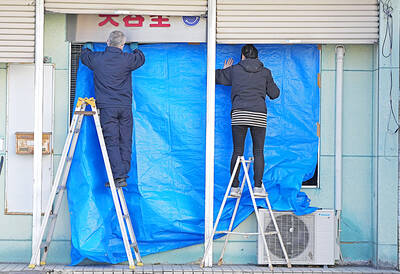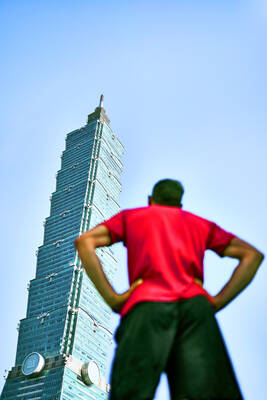Former Chungshan Institute of Science and Technology (CSIST) president Kung Chia-cheng (龔家政) made known some behind-the-scenes details of the nation’s missile development in a memoir published by Academia Sinica’s Institute of Modern History last month.
Speaking about the supersonic cruise missile developed by the Yun Feng (雲峰, Cloud Peak) project, Kung said the missile could exceed Mach 3 and had excellent penetration, as it comes down on its target vertically.
The missile’s speed ensures that it is not easily intercepted, and at the time of the missile’s development, under former president Lee Teng-hui (李登輝), only the US and Russia were developing similar kinds of missiles, Kung said.

Photo: screen grab from CSIS Web site
The Ministry of National Defense had nearly axed the project as it thought the missile would have a high possibility of failing its trial launch, he said.
Fortunately, former president Chen Shui-bian (陳水扁) had conducted an inspection of CSIST during his presidency, and the institute briefed the president and received support to continue the project, he added.
Nearly 400 CSIST members worked on a secret project to develop ballistic missile capabilities under the overarching “Tien Kung” project. It was the first time that Taiwan developed a missile that was 1m in diameter and 10m in height, Kung said, adding that Chen was impressed when he inspected the missile at Pingtung County’s Jiupengwan (九鵬灣) missile test base.
The American Institute in Taiwan met with Chen soon after the trial launch of the missile, he said, adding that the institute issued a memorandum of understanding stating that we “were not allowed to have carried out the trial launch.”
Kung said that even if the project had been successful, it would simply have been a demonstration that the CSIST could make ballistic missiles, and it would have taken more trials for the project to produce combat-ready weapons.
Kung also spoke about the Hsiung Feng II-E missile, which has two variants: type A, which has a range of 500km, and type B, which has a range of 1,000km.
Officials had been pleased with the successful results of the Hsiung Feng II-E type B simulation, he said.

Taiwanese were praised for their composure after a video filmed by Taiwanese tourists capturing the moment a magnitude 7.5 earthquake struck Japan’s Aomori Prefecture went viral on social media. The video shows a hotel room shaking violently amid Monday’s quake, with objects falling to the ground. Two Taiwanese began filming with their mobile phones, while two others held the sides of a TV to prevent it from falling. When the shaking stopped, the pair calmly took down the TV and laid it flat on a tatami mat, the video shows. The video also captured the group talking about the safety of their companions bathing

US climber Alex Honnold is to attempt to scale Taipei 101 without a rope and harness in a live Netflix special on Jan. 24, the streaming platform announced on Wednesday. Accounting for the time difference, the two-hour broadcast of Honnold’s climb, called Skyscraper Live, is to air on Jan. 23 in the US, Netflix said in a statement. Honnold, 40, was the first person ever to free solo climb the 900m El Capitan rock formation in Yosemite National Park — a feat that was recorded and later made into the 2018 documentary film Free Solo. Netflix previewed Skyscraper Live in October, after videos

Starting on Jan. 1, YouBike riders must have insurance to use the service, and a six-month trial of NT$5 coupons under certain conditions would be implemented to balance bike shortages, a joint statement from transportation departments across Taipei, New Taipei City and Taoyuan announced yesterday. The rental bike system operator said that coupons would be offered to riders to rent bikes from full stations, for riders who take out an electric-assisted bike from a full station, and for riders who return a bike to an empty station. All riders with YouBike accounts are automatically eligible for the program, and each membership account

A classified Pentagon-produced, multiyear assessment — the Overmatch brief — highlighted unreported Chinese capabilities to destroy US military assets and identified US supply chain choke points, painting a disturbing picture of waning US military might, a New York Times editorial published on Monday said. US Secretary of Defense Pete Hegseth’s comments in November last year that “we lose every time” in Pentagon-conducted war games pitting the US against China further highlighted the uncertainty about the US’ capability to intervene in the event of a Chinese invasion of Taiwan. “It shows the Pentagon’s overreliance on expensive, vulnerable weapons as adversaries field cheap, technologically